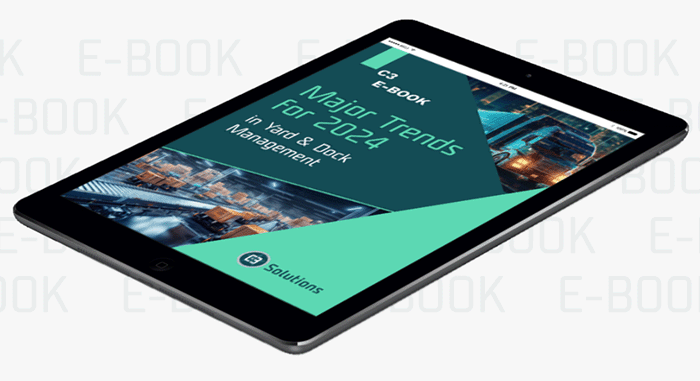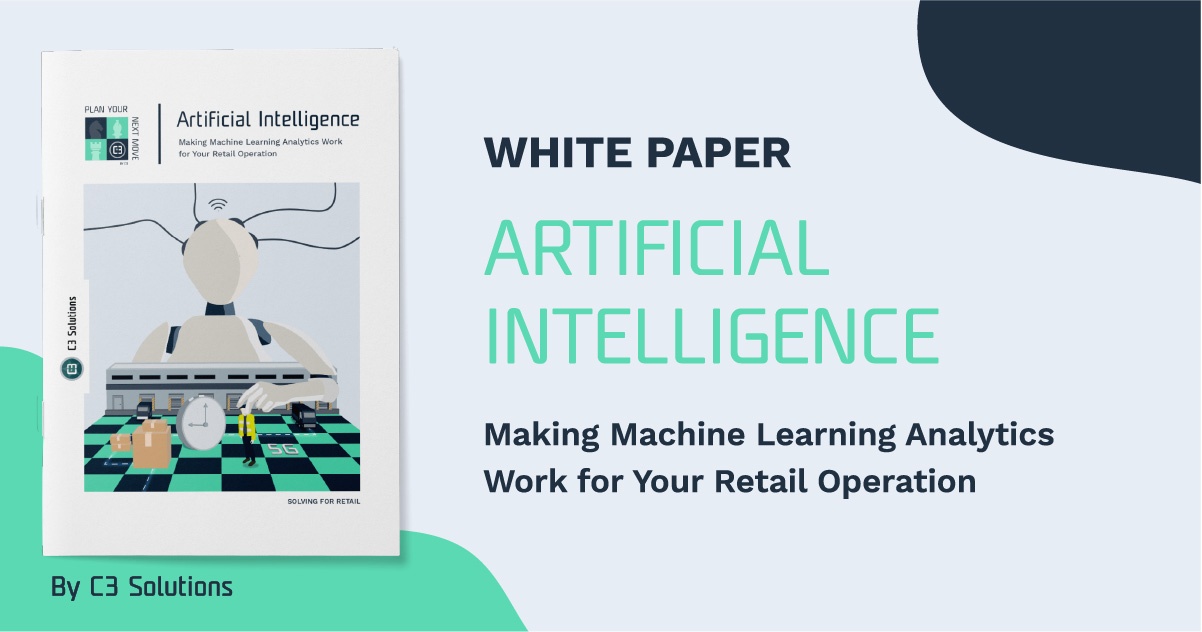Major Trends in Yard & Dock Management for 2024

In 2024, the yard and dock management landscape is undergoing a transformative shift, driven by stakeholders grappling with the challenges and opportunities of a rapidly evolving market. Businesses now realize the significant return on investment these areas offer, a realization spurred by the advancements in technology and a deeper understanding of supply chain dynamics.
The pivotal role of yards and docks in the global supply chain cannot be understated. These critical nodes act as the junction points between transportation modes, the stepping stones of efficient inventory management, and the gatekeepers of product flow. This has translated into increased investment in strategic enhancements across yards and docks.
As we delve into the major trends set to redefine yard and dock management in 2024, it is essential to appreciate the context in which these changes are occurring. The industry is not just responding to temporary market fluctuations or transient challenges; it is undergoing a fundamental shift in how it views and manages these critical areas. This shift is underpinned by a deeper appreciation of the complexities of modern supply chains and a commitment to leveraging technology for smarter, more agile operations.
So, what should you be focusing on in 2024? Well, it depends on where you are in the yard and dock management journey. But here are a few of the trends that will redefine this particular space in the coming year.
The Debut of Just-In-Time & Hyper-Local Fulfillment
The most prominent change in 2023 came from the industry reacting to stubbornly high rates of interest, which pushed up capital costs. This economic pressure necessitated a more judicious cash flow and inventory management approach. As a result, the trend is shifting towards re-evaluating just-in-time inventory practices in favor of multi-echelon inventory optimization.
This shift signals a transition towards hyper-local fulfillment based on real-time, omnichannel logistics solutions. These adaptations addressed immediate financial constraints, while paving the way for more streamlined and efficient supply chain operations, reducing unnecessary stockpiling and leading to a leaner, more responsive logistics framework.
Additionally, it aligns with consumer demand for faster and more flexible delivery. This trend highlights the need for agility and responsiveness in the supply chain and requires strategies that can quickly change market dynamics while remaining cost-effective.
The Global-to-Local Shift: Nearshoring
Another significant trend for 2023 was the subtle but large-scale shift in global sourcing patterns due to the complexity and risk of global supply chains. Nearshoring became a buzzword as businesses sought to hedge the risks of far-flung supply chains. Mexico's rise to becoming the top exporter to the US, above China, demonstrates this shift. This shift reflects sourcing based on geographic proximity, enabling lower transportation costs, shorter lead times, and improved supply chain resilience.
In addition, the example of manufacturing giants such as China shifting some operations to the US and investing in facilities across Mexico signals a more general reconfiguration of the manufacturing base.
As we enter 2024, tech innovations and rising customer demands continue to drive yard and dock management changes at the highest pace ever. From widespread automation to extensive data utilization, companies invest in yards and docks as they realize the ROI of such investments is much higher than that of other parts of the supply chains that are now saturated.
AI and Machine Learning Integration
The integration of Artificial Intelligence (AI) and Machine Learning (ML) is revolutionizing a multitude of industries through a wide array of practical applications, from intelligent automation and superior data insights to contextual chatbots. These technologies are not just transforming processes; they are redefining them. Let us discuss how it will improve the yards and docks in 2024.
Operations Optimization:
In enhancing yard and dock management, AI and ML can take intelligent calls as the situation develops and integrate processes more effectively than before.
This change is critical as the AI algorithms can predict scenarios such as ideal docking slots and arrival rates of the trucks, allocate yard space and labor effectively, and significantly reduce turnaround times with all such interventions. All these decisions are made manually by people today and hence depend on the expertise and promptness of the person handling such operations.
Predictive Maintenance:
An additional area where AI shines is predictive maintenance. AI predicts equipment failures before they happen by analyzing data patterns, lessening downtime, and enhancing operational efficiency. While these use cases are already implemented in manufacturing, they are still quite nascent in the logistics segment — especially yard and dock management.
A report by Deloitte found that predictive maintenance can increase equipment availability and uptime by up to 20%, reduce maintenance costs by 5% to 10%, and hence reduce the planning required for maintenance by about 50%.
Conversational AI: Improving Supply Chain Interactions
2024 will also witness substantial growth in Conversational AI use cases within supply chains. These AI systems simplify communications and allow companies to speak to their supply chains via natural language processing (NLP).
Conversational AI will shift supply chains toward natural, conversational interactions, making it a lot easier to get information regarding different parts of the supply chain without learning any new software or skills. With Conversational AI, companies could be more responsive and make more data-based decisions. Customer service can also be improved by providing visibility through the chatbots created on top of conversational AI.
Increased Use of IoT Devices
The Internet of Things (IoT) has evolved beyond a mere trend to become a cornerstone in the transformation of the logistics ecosystem. This evolution is underscored by the significant global investments made in this technology. A retrospective analysis of IoT spending over the past decade paints a picture of sustained growth and deepening commitment within the industry.
Remarkably, the Worldwide IoT market, which stood at $586 billion in 2019, is forecasted to surge to $1.1 trillion by 2024. This remarkable growth — nearly doubling in just five years — not only demonstrates the potential of IoT but also indicates its expanding role in various sectors, including yard and dock management.
For instance, IoT is upgrading how we track and control logistics. Sensors and IoT products allow real-time vehicle and cargo tracking to optimize operations. IoT-enabled yard management products offer visibility by enabling vehicle tracking and gate monitoring through sensors.
These systems automatically assign gates according to cargo type, track assets, and collect detention fees without human intervention. This technology improves operational efficiency and safety through real-time truck monitoring, dock assignment, and yard motion monitoring.
With smart gates, RFID tags, and GPS monitoring, bringing more intelligent and connected yards and docks, this year will see an industry evolution toward automated, responsive, and data-driven operations.
Vehicle Management Automation & AGVs
In warehouses, many assets and goods need retrieval and storage. Automatic storage and retrieval systems (AS/RS) are gaining importance because of their efficiency and safety improvement, particularly in shortening load movement time.
A research report reveals that the automated guided vehicle (AGV) market was $3.39 billion in 2020, and it will grow with a 13.8% CAGR until 2028. This growth is attributable to AGVs' versatility in replacing forklifts, linking storage to production lines, and moving products from the picking area. These technologies will simplify operations by minimizing human error while increasing general safety and efficiency. Introducing these automated vehicles into everyday operations translates into quicker goods movement, lower labor costs, and considerably reduced operational risks.
Sustainability Initiatives: Green Technologies
An idle truck can waste gallons of diesel per hour, leading to unnecessary costs and emissions. According to the U.S. EPA, this equates to 22.46 pounds of CO2 per gallon. Yard Management Solutions are key in reducing these emissions, vital for environmental strategies and compliance with emerging regulations like Southern California's Rule 2305 or the Inflation Reduction Act, which focus on decreasing emissions by up to 50% in supply chain and warehousing activities.
Green technologies are also being employed more extensively in the logistics industry, which includes electrical forklifts and solar-powered warehouse equipment. These programs bring down carbon footprint and deliver savings over the long term.
Yard Management Software solutions that optimize operations for low emissions are now becoming common. These solutions will enable the planning and implementation of green approaches in the coming year without sacrificing operational effectiveness.
Customization & Flexibility in Yard Management & Dock Scheduling
As yards scale in size, they warrant supply chains to be more agile, as the "one-size-fits-all" strategy commonplace in yard management will no longer make sense. These days, companies look for flexible and customizable yard management solutions that meet their specific operational requirements. This trend is about creating experiences tailored to business needs and ensuring that the YMS adds to your supply chain strengths.
This trend is increasing, and in the coming year, the demand for customized yard management solutions will overtake the out-of-the-box vanilla YMS solutions.
Digital Twin Technology: New Approach to Yard and Dock Design
By generating highly accurate, real-time 3D models of physical environments, digital twin technology offers managers an unparalleled depth of insight and analysis. This capability is not merely about visual representation; it enables a deep dive into complex operational scenarios, fostering a level of research and decision-making precision that was previously unattainable.
The strength of digital twin technology lies in its ability to simulate and analyze various operational situations in a virtual environment. This feature allows managers to predict outcomes, plan with greater certainty, and make swift, proactive adjustments to their strategies. By doing so, it significantly reduces the likelihood of operational disruptions and enhances the efficiency of yard and dock management processes.
The integration of digital twin technology in yard and dock management marks a pivotal advancement towards a more predictive, data-driven approach. It facilitates real-time tracking and monitoring of operations, enabling a proactive response to potential issues before they escalate. This shift towards a more forward-thinking, strategic management style is crucial for adapting to the rapidly evolving logistics landscape.
Intelligent Command Centers
In 2024, intelligent command centers will revolutionize the supply chain industry. These advanced systems are poised to redefine the traditional supply chain control towers with capabilities far beyond traditional KPI tracking. These command centers will provide a broader and more holistic view of the supply chain. Users will get actionable insights to improve decisions and spot target areas that need immediate attention.
Various technical capabilities, similar to C3 Dashboards, will form the backbone of these intelligent command centers. These platforms will converge disparate data sources, analytics tools, and real-time monitoring systems. These command centers will converge information from all supply chain segments to create a single, integrated view of operations. This integration enables better forecasting, proactive problem-solving, and strategic planning.
Intelligent command centers will equip decision-makers with data-driven insights of unprecedented granularity and precision, surpassing the capabilities of traditional analysis methods. These advanced insights will not only illuminate current performance metrics in finer detail but also empower predictive analytics to foresee challenges and opportunities well before they materialize.
Analytics for Decision-Making
Yard management has typically relied on manual processes and instinctive judgment. Nevertheless, in the coming year, along with the technological advancements we discussed — like RFID tags, IoT devices, GPS trackers, and other devices — companies will be able to obtain vast amounts of information utilizing sensors.
Using this real-time data, companies can gain better insights into yard operations, make informed choices, and improve yard operation methods. Detecting trends and patterns will help companies plan better for the future and remain ahead of competition.
As we move into 2024, these trends will shape the future of yard and dock management. By implementing some, if not all, of these innovations, businesses can boost efficiency, reduce costs, and stay frontrunners in a competitive marketplace.
About C3 Solutions
C3 Solutions has acquired the trust of a worldwide clientele in fields as varied as retail, distribution, grocery, manufacturing, and postage. This widespread trust stems from the practicality and user-friendliness of our solutions.
C3 yard, the company's yard management system (YMS), is a web-based platform that keeps yard managers up to speed with the latest trends and provides crucial information about yard assets.
To learn more about how C3 Solutions can transform your business, visit our site and ask for a demo now!




